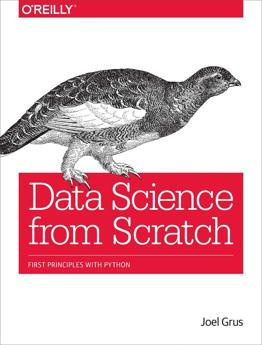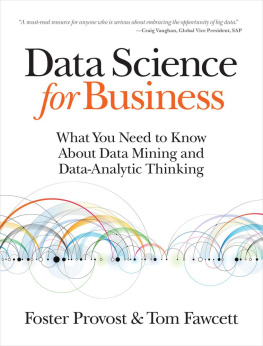Michael R. Brzustowicz [Michael R. Brzustowicz] - Data Science with Java
Here you can read online Michael R. Brzustowicz [Michael R. Brzustowicz] - Data Science with Java full text of the book (entire story) in english for free. Download pdf and epub, get meaning, cover and reviews about this ebook. year: 2017, publisher: O’Reilly Media, Inc., genre: Computer. Description of the work, (preface) as well as reviews are available. Best literature library LitArk.com created for fans of good reading and offers a wide selection of genres:
Romance novel
Science fiction
Adventure
Detective
Science
History
Home and family
Prose
Art
Politics
Computer
Non-fiction
Religion
Business
Children
Humor
Choose a favorite category and find really read worthwhile books. Enjoy immersion in the world of imagination, feel the emotions of the characters or learn something new for yourself, make an fascinating discovery.
- Book:Data Science with Java
- Author:
- Publisher:O’Reilly Media, Inc.
- Genre:
- Year:2017
- Rating:5 / 5
- Favourites:Add to favourites
- Your mark:
Data Science with Java: summary, description and annotation
We offer to read an annotation, description, summary or preface (depends on what the author of the book "Data Science with Java" wrote himself). If you haven't found the necessary information about the book — write in the comments, we will try to find it.
Data Science is booming thanks to R and Python, but Java brings the robustness, convenience, and ability to scale critical to todays data science applications. With this practical book, Java software engineers looking to add data science skills will take a logical journey through the data science pipeline. Author Michael Brzustowicz explains the basic math theory behind each step of the data science process, as well as how to apply these concepts with Java.
Youll learn the critical roles that data IO, linear algebra, statistics, data operations, learning and prediction, and Hadoop MapReduce play in the process. Throughout this book, youll find code examples you can use in your applications.
- Examine methods for obtaining, cleaning, and arranging data into its purest form
- Understand the matrix structure that your data should take
- Learn basic concepts for testing the origin and validity of data
- Transform your data into stable and usable numerical values
- Understand supervised and unsupervised learning algorithms, and methods for evaluating their success
- Get up and running with MapReduce, using customized components suitable for data science algorithms
Michael R. Brzustowicz [Michael R. Brzustowicz]: author's other books
Who wrote Data Science with Java? Find out the surname, the name of the author of the book and a list of all author's works by series.

![Michael R. Brzustowicz [Michael R. Brzustowicz] Data Science with Java](/uploads/posts/book/119626/thumbs/michael-r-brzustowicz-michael-r-brzustowicz.jpg)



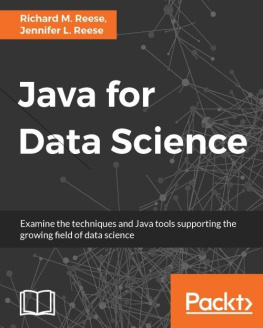
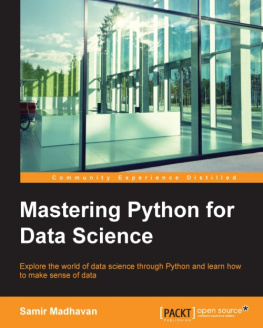
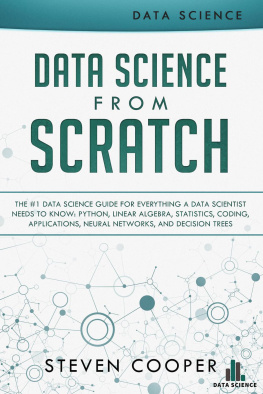
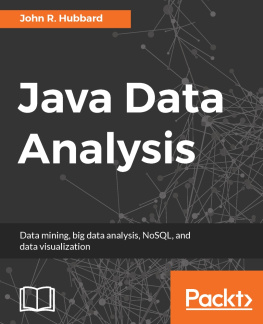

![Alexey Grigorev [Alexey Grigorev] - Mastering Java for Data Science](/uploads/posts/book/119620/thumbs/alexey-grigorev-alexey-grigorev-mastering-java.jpg)
